Many tennis clubs and websites accept children as young as three years old for tennis classes. But at three years old, most children aren’t balanced or coordinated enough to play tennis. As well as this, intensive physical activities can be detrimental to a developing young child. So, if you’re keen to get your child going with sporting activities, you might be wondering when exactly children developed enough to play tennis.
The best age for a child to start playing tennis is around 8 or 10 years old. Children who partake in intense, repetitive physical activities below this age are more prone to injuries, burnout, and asymmetrical muscle and bone development.
If you dream of raising a tennis champion, you might be keen to start them early. However, one of the greatest tennis players of our time, Roger Federer, didn’t start playing tennis until he was eight years old. So, to help you make an informed decision about when your child should start playing tennis, we’ve listed the facts about child development and tennis below.
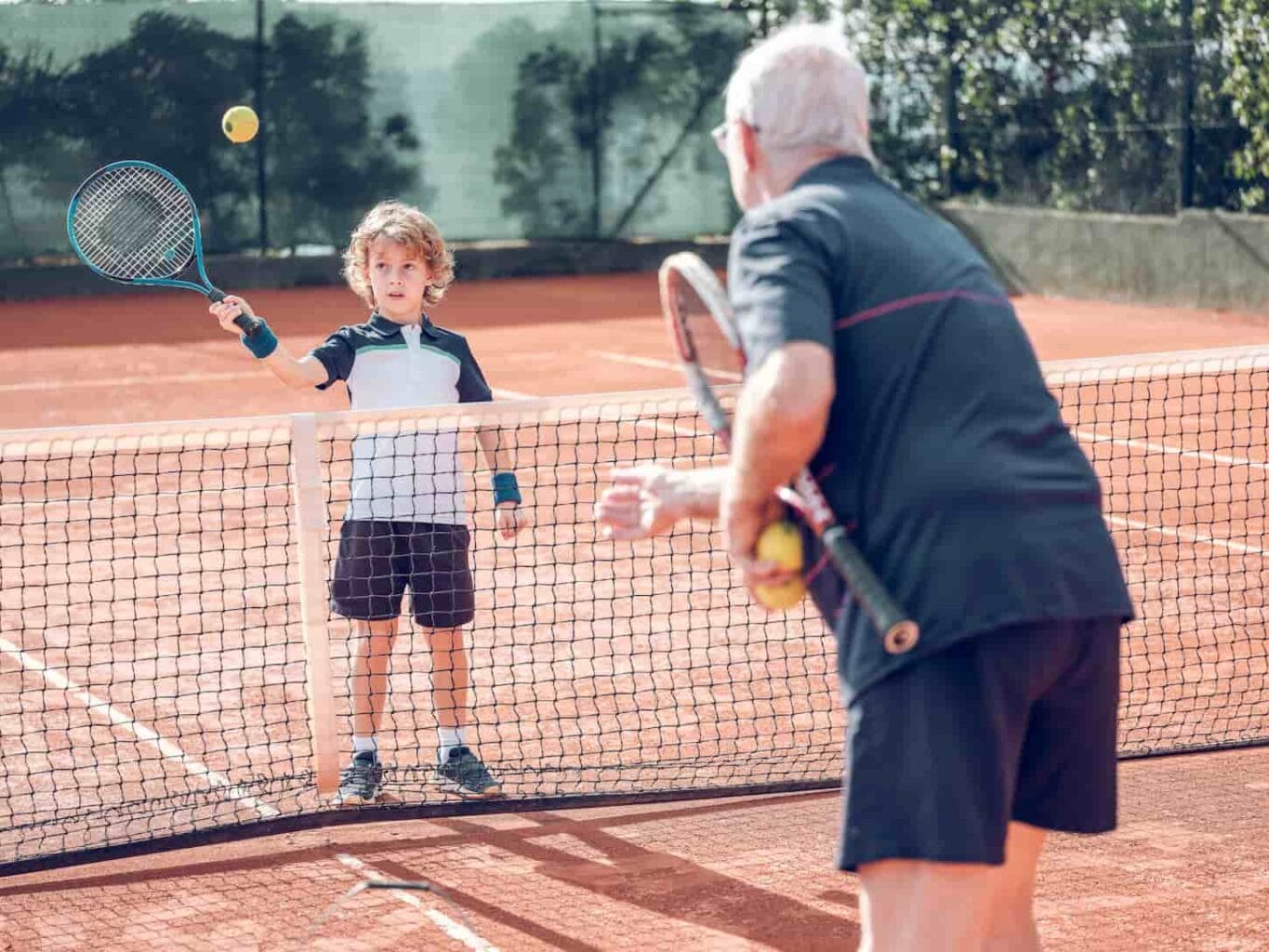
The Benefits of Tennis for Children
Like all sports, tennis is fantastic for your child’s health because it gives them a physical workout. On top of this, tennis will help strengthen muscles and improve your child’s coordination, agility, reactions, and reflexes.
Playing tennis can increase a child’s attention span and help them stay more alert in the classroom. Tennis will also help children with decision making, and independent thinking, and it can improve their hand-to-eye coordination.
Tennis teaches children all about discipline and tolerance, and tennis classes are a great way for your child to develop teamwork and social skills. As well as this, when children play tennis, they learn how to understand and follow rules. Overall, tennis is a calm and dignified sport, so it’s a great way to teach children about sportsmanship.

Is 4 to 6 too Early to Start Playing Tennis?
Many tennis professionals say that 4 to 6 years is the best time for children to start playing tennis. While it might be ok for children to experiment with tennis equipment at this age, they shouldn’t do intense and repetitive physical activities.
Each child develops at a different rate, but before six years old, most children won’t have sufficient motor skills and cognitive ability to play tennis. This includes things like hand-to-eye coordination, decision-making, and the ability to retain knowledge or to track moving objects with their eyes. These skills don’t come until around 6 to 8 years old.
If your child is interested in tennis from a young age, don’t restrict them from playing. It’s ok to let young children play around and experiment with junior balls and rackets on a tennis court. This way, they learn how to handle a tennis racket and get used to the court environment.
However, children below eight years shouldn’t get into serious, repetitive training such as hitting a forearm shot repeatedly. If they do, they may get injured or in worse cases, it could affect their development. Instead of learning specific moves and techniques, tennis classes for young children should focus on fun games that help to build strength, stamina, and coordination.
Children that start playing tennis below the age of six aren’t necessarily at an advantage. Many tennis champions started playing at eight years old including, Stan Warinker, John McEnroe, Roger Federer, and Pat Cash. When children start tennis too early, it can lead to burnout, and burnout can end their tennis career before it’s even begun.
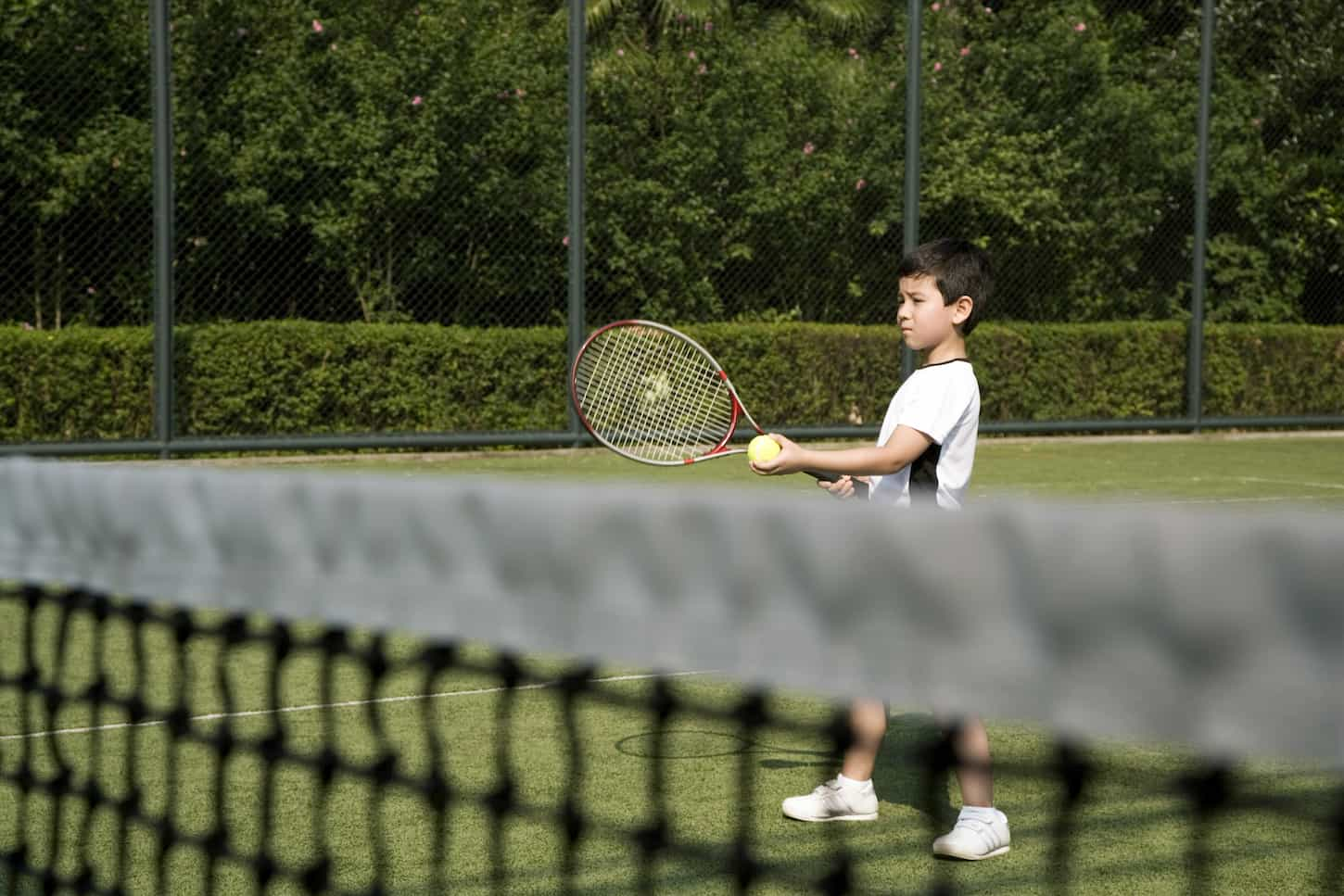
What is Tennis Burnout?
Tennis burnout occurs when a child becomes physically and emotionally exhausted by tennis. Tennis burnout in children is very similar to chronic stress, and it comes from intense training, unrealistic goals, and external pressure from parents or a trainer.
Parents send young children to tennis classes with the best intentions. They think starting young will give their child an advantage in the game. However, for some children, regular tennis classes at a young age can become monotonous, and the support of their parents can feel like pressure.
In some cases, this means the child plays tennis to please their parents rather than for personal enjoyment, and this may result in tennis burnout.
Signs of tennis burnout include:
- Becoming withdrawn
- No enthusiasm or motivation for the game
- Low in physical and emotional energy
- Lack of concentration on and off the court
- Skipping classes
- Negative and frustrated feelings
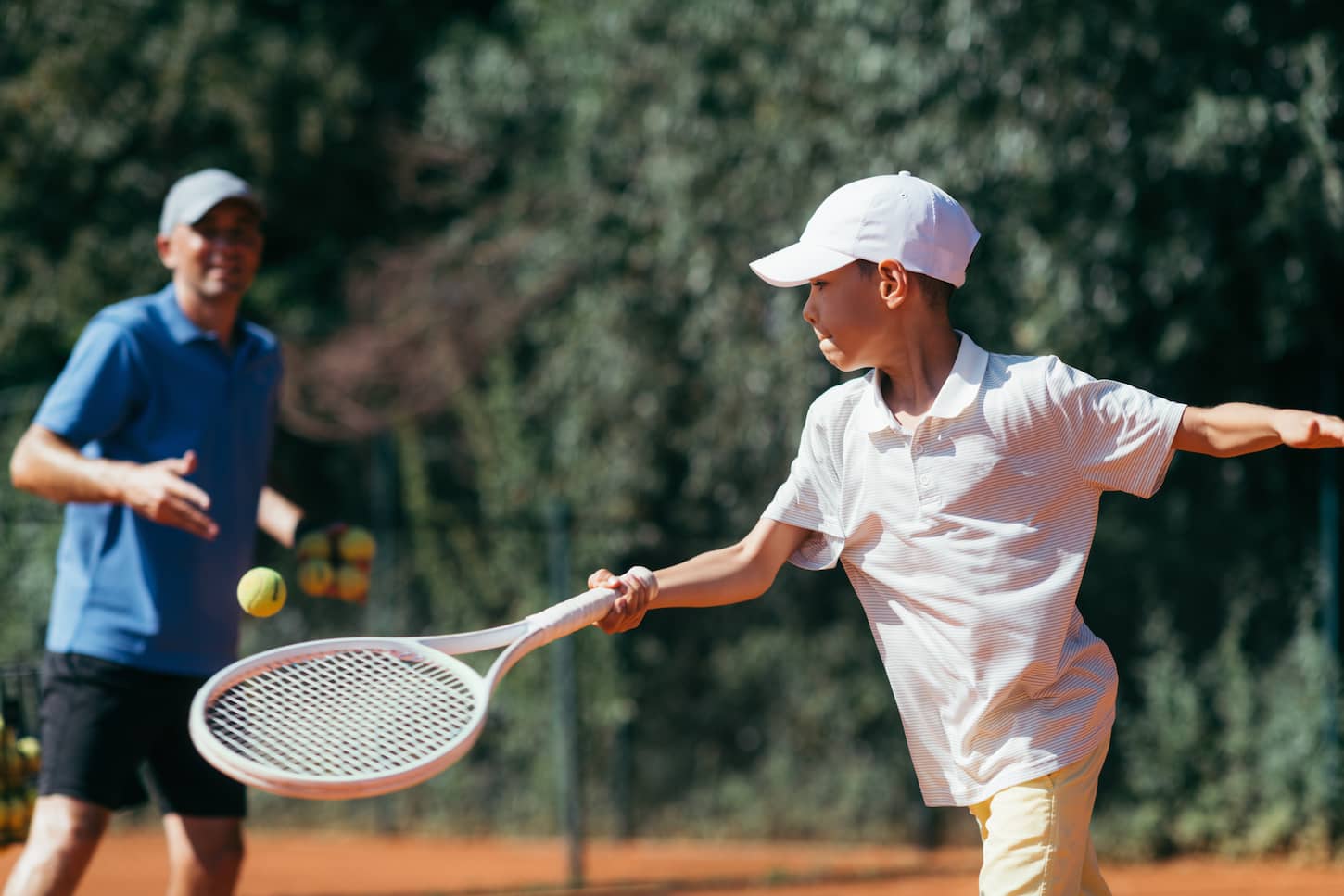
Tips on How to Avoid Tennis Burnout in Children
To avoid tennis burnout, always let young children develop their tennis skills at their own pace. Never put children under pressure to play and make sure they play tennis because they enjoy it.
Here are a few more tips on how to avoid tennis burnout in children:
- Don’t Start Too Young – Children who start tennis at a young age are more prone to physical and emotional burnout.
- Don’t Get Too Involved – Parental support is a good thing, but don’t overdo it. Let your child dictate their tennis goals.
- Teach Your Child Stress Management and Coping Strategies – When your child learns to recognize and deal with stress, they’re less likely to have burnout. Stress management and coping strategies will help your child off the court too.
- Keep It Fun – Make sure tennis lessons are fun and don’t take things too seriously. Tennis should be something that relieves stress, not something that creates it.
- Don’t Overtrain – Build up gradually and keep training to two or three sessions per week.
- Encourage Other Physical Activities – Don’t just focus on tennis. Encourage your child to do other sports too, such as swimming. When your child plays lots of different sports, they will become more flexible and balanced.
- Make Sure Your Child Has a Social Life Away from Tennis – Your child shouldn’t eat, breathe and sleep tennis, no matter how much they love it. Don’t let tennis become an unhealthy obsession.
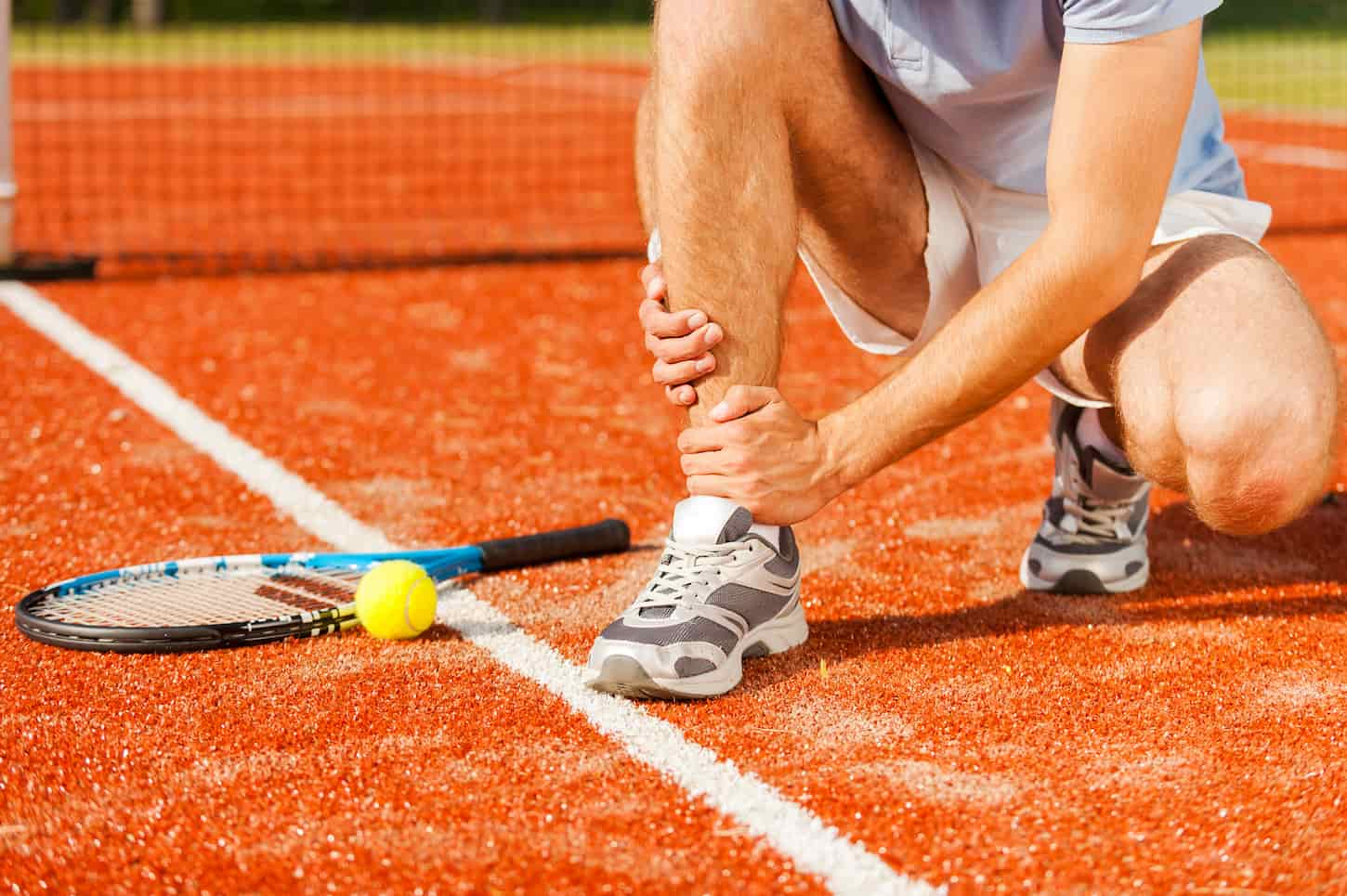
Junior Tennis Injuries
When children start tennis too young, as well as burnout, they’re also more prone to tennis-associated injuries. When a child overuses their limbs and muscles while they’re still developing, they can damage or even deform them.
Common tennis injuries include:
- Nursemaids or Tennis elbow
- Shoulder injuries
- Elbow injuries
- Ankle injuries
- Knee injuries
- Asymmetrical bone and muscle development in the playing arm
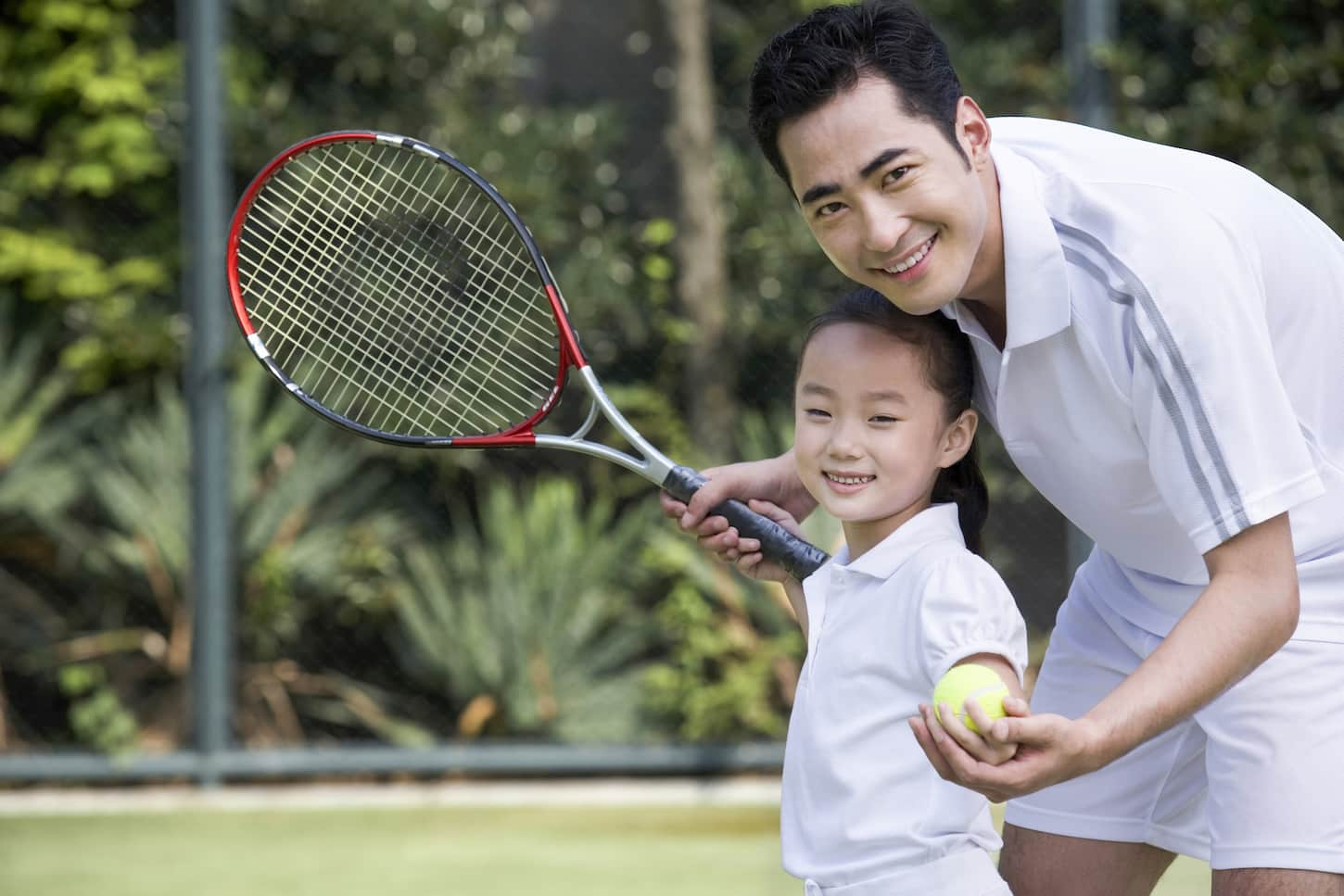
Best Age to Start Tennis
The best time for children to start tennis is between 8 and 10 years. There is no proof that starting tennis at a young age will make a child a better player. However, there is proof that intense physical activities, at a young age, can cause physical abnormalities and stress.
The general consensus among scientists and health professionals is that pre and early puberty is the best time for children to start intensive exercise. Just before puberty, children become physically sturdy, and exercise such as tennis will help them with bone and muscle development.
At around 8 to 10 years, a child’s physical characteristics start to solidify into their adult ones, and at this age, the sporty kids naturally become more sporty. As well as this, at 8 to 10 years children have a better attention span and are more rational and independent. So at 8 to 10 years, children are both physically and mentally ready to play tennis.
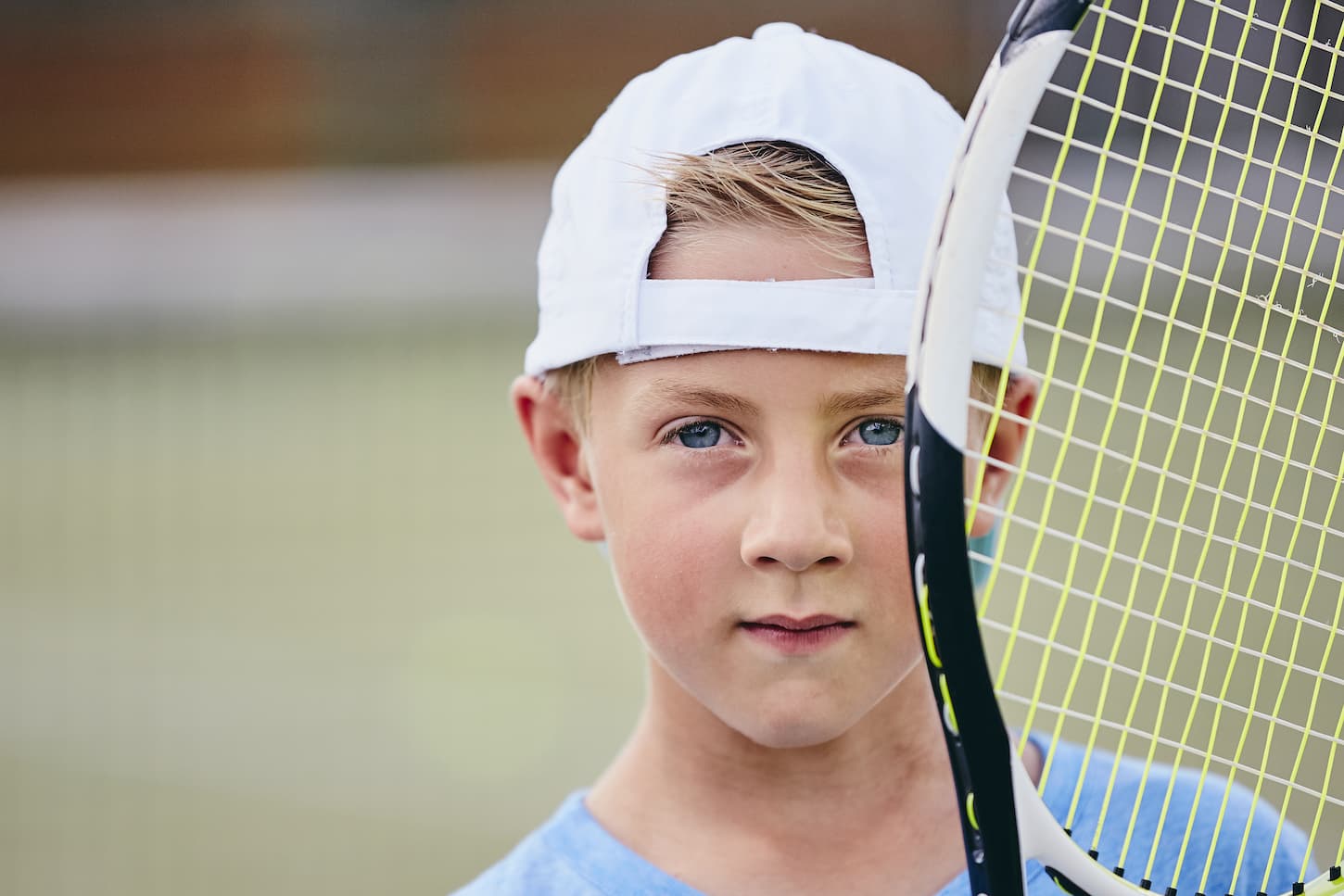
Is 13 to 16 too Old to Start Playing Tennis?
It’s never too late to start playing tennis and tennis is a fantastic sport for teenagers. Not only does it get them out of the house and give them purpose in life, but it will also improve their health and boost their self-esteem.
Tennis is a very effective form of aerobic exercise, and teenagers need around 60 minutes of aerobic exercise a day to keep fit and healthy. Regular aerobic exercise can also boost mood levels and help to keep stress at bay.
Teenagers will benefit a lot from the discipline that comes with playing tennis, and if they take classes, they’ll make a whole new circle of friends. Tennis is also a great way to tackle obesity and internet addiction in teenagers.
Many teenagers can be pretty self-conscious, so tennis is a great way to improve their self-esteem. Not only will playing tennis help to keep them in shape, but it will also improve their skin. As well as this, active teenagers are also less likely to develop diseases such as diabetes, high cholesterol, and blood pressure in later life.
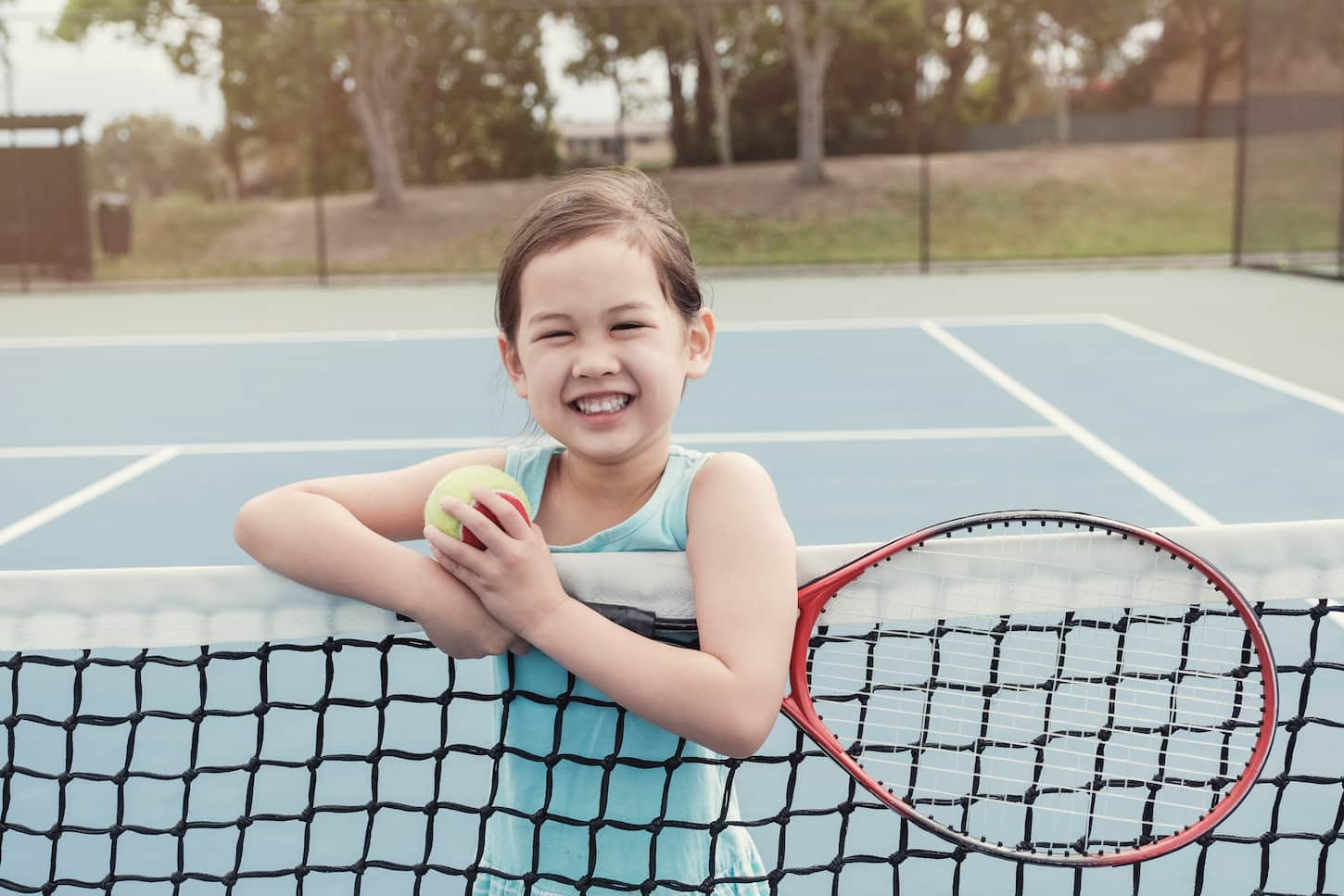
Does My Child Need Professional Tennis Lessons?
Unless you’re a tennis professional, it’s always a good idea to get professional coaching for your child from the start. A professional coach will make sure your child develops the correct techniques from the beginning. If your child learns incorrect techniques, it’s hard to undo them.
For professional tennis tuition, you can either enroll your child in tennis classes, join a tennis club or hire a private coach. Groups are more fun and social than private coaching, and the kids get to play in matches together.
Private tennis coaching is more expensive than classes, but your child will benefit from personalized, 1 on 1 training and attention. Many parents send their children to group classes and supplement these classes with a private coaching session every now and then.
Junior Tennis Tips
The most vital thing regarding junior tennis is that your child must use junior tennis equipment. Junior tennis rackets and balls are lighter and more ergonomic to suit children’s strengths. If they use heavy adult equipment, this will put extra strain on their muscles and ligaments.
Junior tennis balls are usually foam and are much lighter than standard, yellow tennis balls. Children under ten years old should also play in a smaller court to avoid straining.
Here are the recommended ball and court dimensions for junior tennis players under ten years old:
- 5 to 8 Years – Children in this age group should play on a 36-foot court and use a red ball which is 75 percent slower than a standard yellow tennis ball.
- 8 to 10 Years – At the next level, children should use a 60-foot court and use an orange ball which is 50 percent slower than a standard ball.
- 9 to 10 Years – In the final stage of junior tennis, children play on a 78-foot court and use a green ball which is only 25 percent slower than a standard ball.
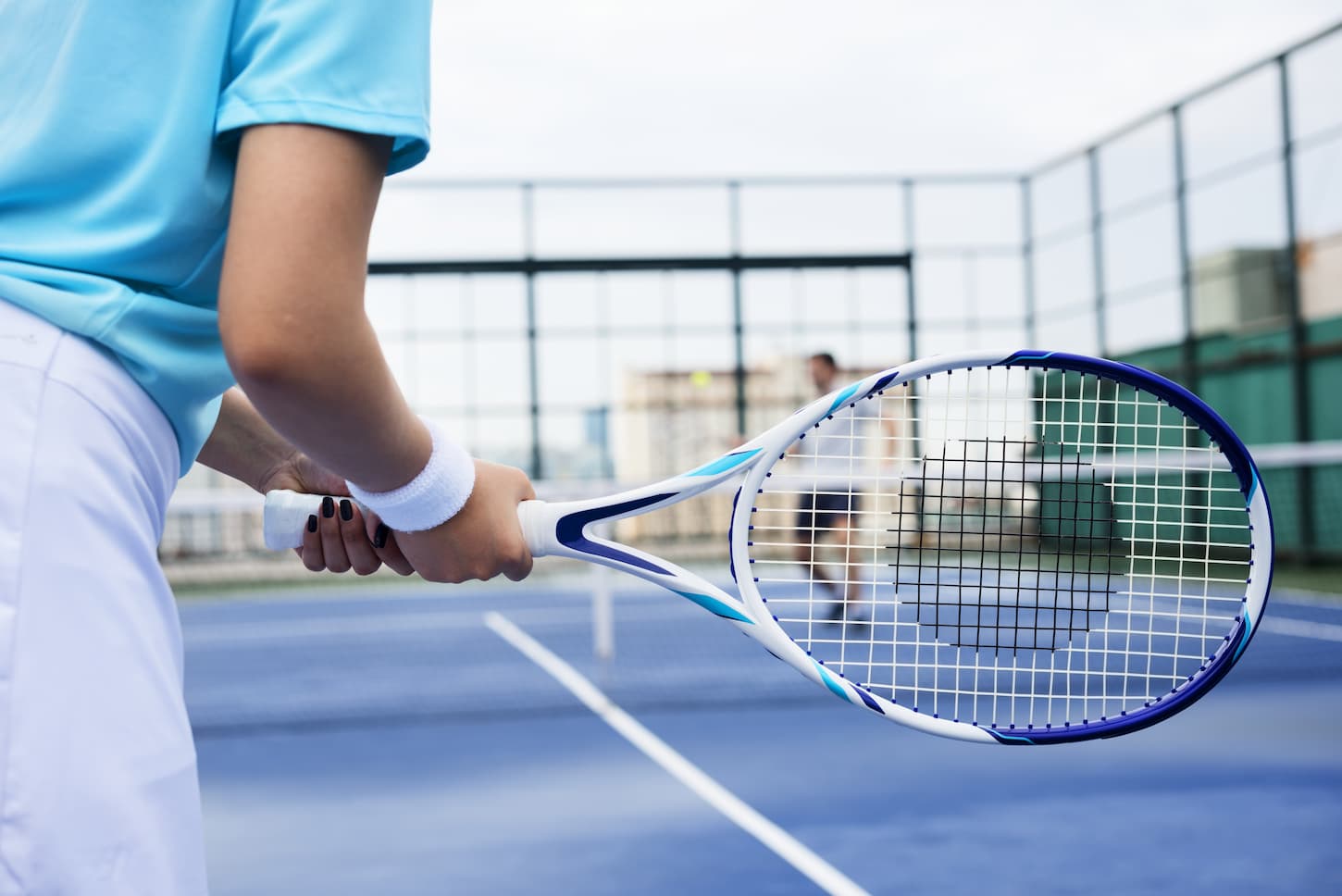
Go Slowly and Keep It Fun!
To avoid tennis injuries, children should gradually build up their tennis sessions. Make sure children have plenty of rest days and that sessions are short, never more than 2 hours.
It’s good for children to play other sports, alongside tennis. Sports such as swimming and soccer will help children develop and strengthen different muscle groups. And this will help to prevent them from suffering from overuse injuries associated with tennis.
Junior tennis should be about fun and socializing, so always make sure the mood is happy and light. If tennis becomes too serious, your child won’t enjoy it anymore. And don’t be afraid to get involved.
Tennis is something you and your children can enjoy together. In fact, with the right level of support and enthusiasm from parents, children are more likely to excel in sports.
Best Products For Junior Tennis Players
Need some help getting some good gear for your junior tennis players? Let me walk you through some of the best options.
Tennis balls
- Make sure you start your tennis player with youth tennis balls (like those on Amazon). They’re designed to control the bounce and go 75% slower than a regular tennis ball, making it a great way to get your player started.
- Sometimes local sports stores carry youth tennis balls, so I’d look there, too. I can usually find the best prices on tennis balls by buying locally, rather than ordering online. It’s just when they’re out, that they seem to be out everywhere and then I have to order online.
Rackets
- If you’re just getting started out with tennis, the best racket is one you can borrow from a friend or neighbor (who doesn’t mind you borrowing one!). Buying a used racket from a thrift store is another good option.
- If you can’t borrow or buy a used racket, then your best (and really only) option is to buy a new racket. Thankfully, Wilson makes a quality and really decently-priced starter racket (click here to shop prices on Amazon) and they cover all the sizes without breaking a budget.
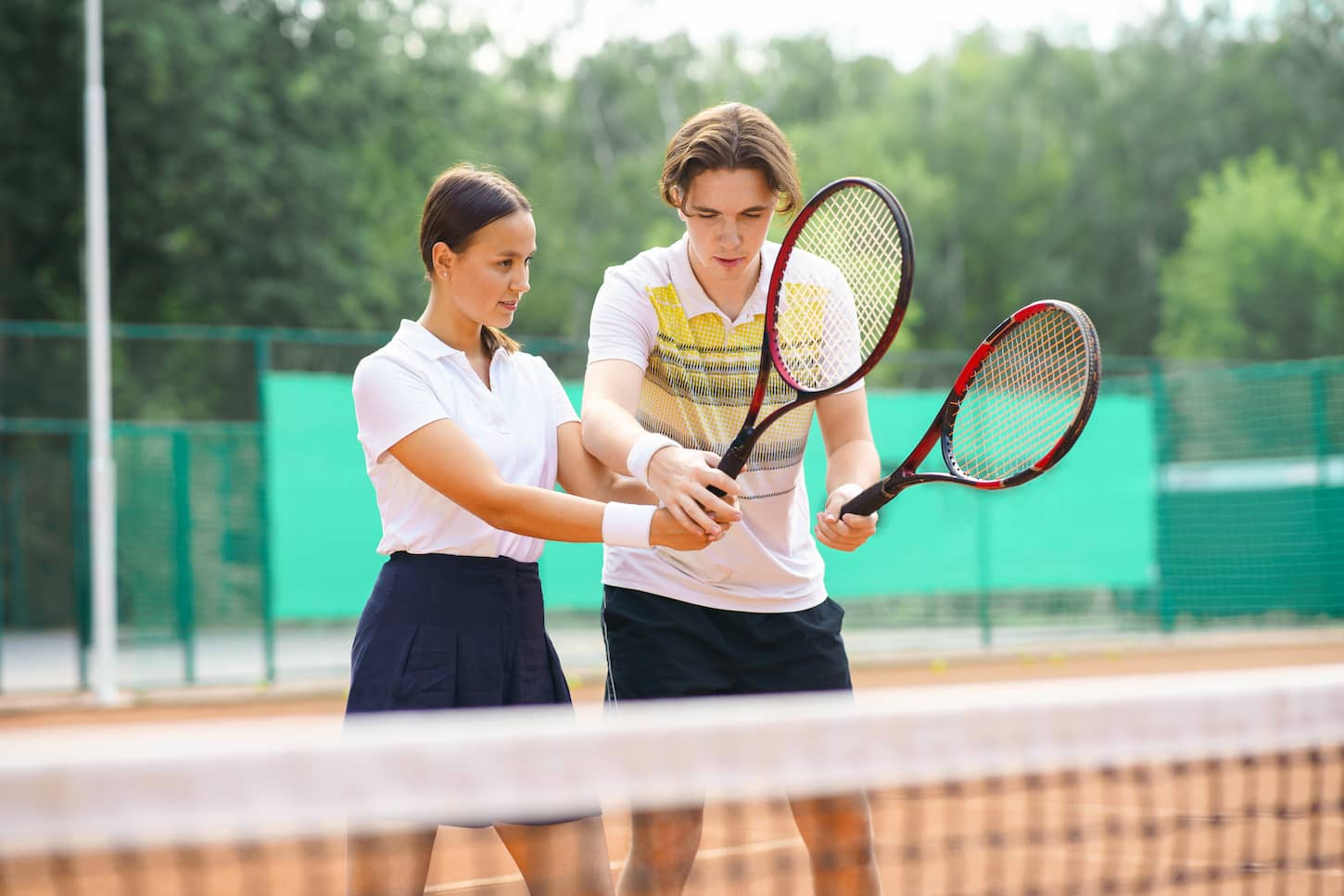
Backyard tennis gear
If you don’t have any local courts, then here’s an easy, budget-friendly way to make your own court.
- Get this portable net (click here to see it on Amazon). Technically, it’s a combo badminton and pickleball net, but it’s a great size for a youth tennis game. You can get it anywhere from 10 to 17 feet wide, so the options are great. And hey, then you can use it for other paddle and racket sports, too!
- Find an easy way to mark the lines of your DIY tennis court. If you’re playing on cement, then a $5 bucket of sidewalk chalk should set you up for months of play. If you’re not on cement, then some disc cones (like these on Amazon) are a great way to note the lines, while also being serviceable for other sports and activities.
Tennis clothing
- If you’re just starting out, then dedicated tennis clothing won’t be as important. It’s not been needed or required for us yet, at least.
- What your children do need is comfortable clothing, such as t-shirts and shorts. My boys keep wearing basketball shorts and t-shirts to play tennis. And their tennis coach is totally fine with it!
- Youth players also need decent footwear. Running around on all that cement can be rough on feet and legs, so dedicated tennis shoes may be a smart option.
Keep in mind, too, that as your family progresses into the tennis world, you will want to add more “proper” gear to your tennis bag. Your coaches should be able to tell you when that time comes, thankfully. But it usually starts at levels where competitions start.
Next Steps
When you look at the facts about child development, it seems like the best age for a child to start playing tennis is between 8 and 10 years old. Between 8 and 10 years, most children are physically and mentally ready to play tennis.
If your child shows a strong interest in tennis before this, it’s ok for them to play around with junior tennis equipment in a court environment. However, they shouldn’t do any intensive repetitive training at this age, because it can lead to injuries and potential tennis burnout.
The main thing to remember about junior tennis is to keep it light and fun and let your child develop at their own pace.
And hey, if they decide to use tennis as a way to experiment with a new sport? That’s awesome, as it keeps them active. They could always transition to another racket-based sport as they get older. Make sure you read our guide comparing badminton, tennis, pickleball, and table tennis next.
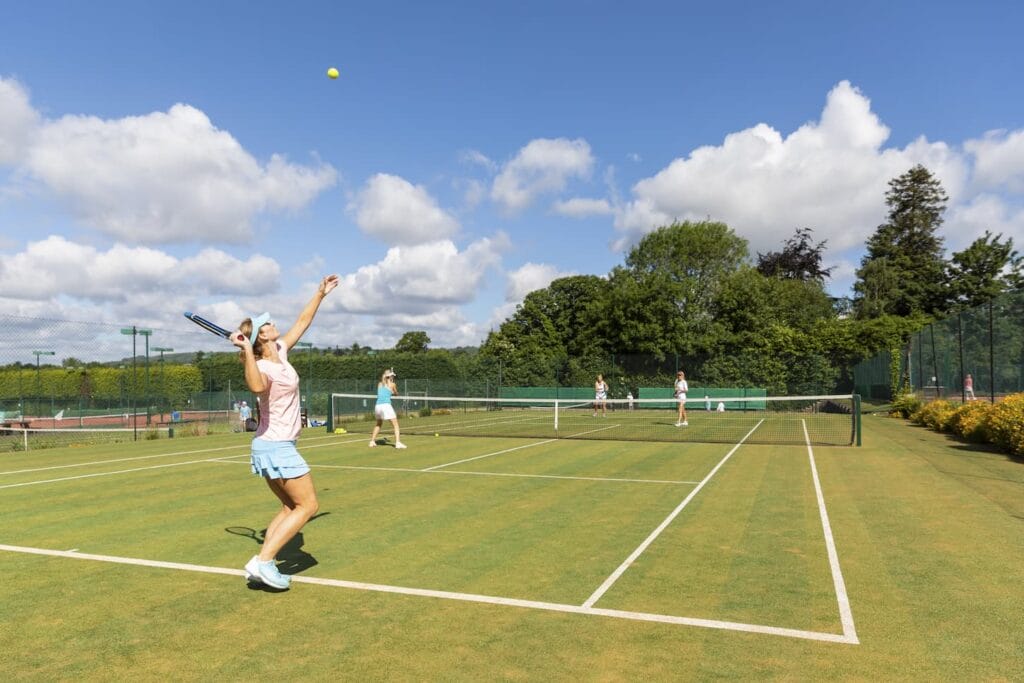
Resources
Learning from your own experiences is important, but learning from others is also smart. These are the sources used in this article and our research to be more informed as a family of sports nuts wannabes.
- “10 Physical and Mental Benefits of Exercise for Teens | Planet Fitness.” Planet Fitness, www.planetfitness.com/community/articles/10-physical-and-mental-benefits-exercise-teens. Accessed 28 Dec. 2021.
- “Beating Burnout.” National Alliance for Youth Sports, www.nays.org/sklive/features/beating-burnout. Accessed 23 Dec. 2021.
- Bylak, Joseph, and Mark R. Hutchinson. “Common Sports Injuries in Young Tennis Players.” Sports Medicine, vol. 26, no. 2, 1998, pp. 119–32. Crossref, doi:10.2165/00007256-199826020-00005.
- Costin, Alex, et al. “Effect of Exercise on Heart-Rate Response to Mental Stress in Teenagers.” European Journal of Preventive Cardiology, vol. 20, no. 4, 2012, pp. 593–96. Crossref, doi:10.1177/2047487312444369.
- Gould, Daniel, Suzanne Tuffey, et al. “Burnout in Competitive Junior Tennis Players: I. A Quantitative Psychological Assessment.” The Sport Psychologist, vol. 10, no. 4, 1996, pp. 322–40. Crossref, doi:10.1123/tsp.10.4.322.
- “Burnout in Competitive Junior Tennis Players: II. Qualitative Analysis.” The Sport Psychologist, vol. 10, no. 4, 1996, pp. 341–66. Crossref, doi:10.1123/tsp.10.4.341.
- Gould, Daniel, Eileen Udry, et al. “Burnout in Competitive Junior Tennis Players: III. Individual Differences in the Burnout Experience.” The Sport Psychologist, vol. 11, no. 3, 1997, pp. 257–76. Crossref, doi:10.1123/tsp.11.3.257.
- “How Children Grow and Develop at Age 8.” Verywell Family, 28 July 2020, www.verywellfamily.com/8-year-old-developmental-milestones-620729.
- IRELAND, ALEX, et al. “Upper Limb Muscle–Bone Asymmetries and Bone Adaptation in Elite Youth Tennis Players.” Medicine & Science in Sports & Exercise, vol. 45, no. 9, 2013, pp. 1749–58. Crossref, doi:10.1249/mss.0b013e31828f882f.
- Knight, Camilla J., and Nicholas L. Holt. “Parenting in Youth Tennis: Understanding and Enhancing Children’s Experiences.” Psychology of Sport and Exercise, vol. 15, no. 2, 2014, pp. 155–64. Crossref, doi:10.1016/j.psychsport.2013.10.010.
- “Parenting in Youth Tennis: Understanding and Enhancing Children’s Experiences.” Psychology of Sport and Exercise, vol. 15, no. 2, 2014, pp. 155–64. Crossref, doi:10.1016/j.psychsport.2013.10.010.
- Palaiothodorou, Dimitria, et al. “Bone Asymmetries in the Limbs of Children Tennis Players: Testing the Combined Effects of Age, Sex, Training Time, and Maturity Status.” Journal of Sports Sciences, vol. 38, no. 20, 2020, pp. 2298–306. Crossref, doi:10.1080/02640414.2020.1779490.
- Perrotta, Tom. “Why Your Child Shouldn’t Be a Tennis Prodigy.” WSJ, 29 June 2015, www.wsj.com/articles/why-your-child-shouldnt-be-a-tennis-prodigy-1435601399.
- “PSYCHOLOGICAL AND EXERCISE INTERVENTIONS FOR TEENAGERS WITH INTERNET ADDICTION DISORDER.” REVISTA ARGENTINA DE CLINICA PSICOLOGICA, 2020. Crossref, doi:10.24205/03276716.2020.228.
- “Tennis Mistakes | Tennis Kids Fitness | Tennis Exercise-Tennis Fitness.” Tennis Fitness, www.tennisfitness.com/blog/common-mistakes-with-kids-tennis-training. Accessed 23 Dec. 2021.
- Vicente-Rodriguez, German. “How Does Exercise Affect Bone Development during Growth?” Sports Medicine, vol. 36, no. 7, 2006, pp. 561–69. Crossref, doi:10.2165/00007256-200636070-00002.
- Walner, Chad. “How Do I Find A Great Tennis Coach?” Serve and Volley Tennis, 9 July 2019, serveandvolleytennis.com/how-to-find-a-great-tennis-coach.
- “What to Expect From Your 10-Year-Old.” Verywell Family, 1 Apr. 2021, www.verywellfamily.com/10-year-old-developmental-milestones-620710.
